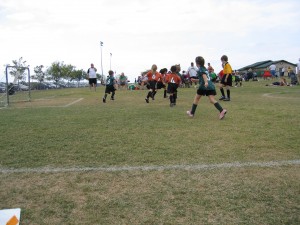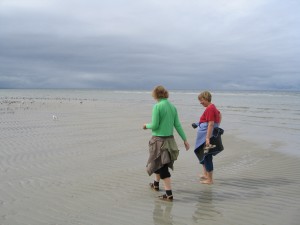October 11, 2010
As I observe in the chapter, ‘What are my risk factors?’, we have a lot of competing goals in life that put being healthy in competition with other things going on. I was attending a conference and met a graduate student who was on crutches. I asked her what happened. She said that she had a fractured pelvis and it was blamed on osteoporosis. She told me that her osteoporosis was caused by drinking too many diet sodas. I decided that I would find a research review article about osteoporosis to share with my undergraduate health message design class. I did. And it reported that the evidence is inconclusive about a link between diet soda and osteoporosis. There was a collective sigh of relief from my students about that statement. Until I asked them, “How would we draw a conclusive link between drinking diet soda and osteoporosis? Why isn’t the research finding considered to be conclusive?”
And so, we launched into another discussion about self-report data and relationships based on having a condition versus not having the condition. “How much diet soda do you drink each day?” I asked. Some were able to answer, while others said, “It depends…” “On what?” I asked. “How hot it is outdoors.” “How much money I have.” “…you know.”
“I do.”  I know that we often build an understanding about health conditions based on asking people questions. As a form of communication, asking people health questions is both an art and a science. How do we ask a question in a way that someone can give us an accurate and complete answer? If asked about how much diet soda you drink on an average each day, how do you decide to respond if you only drink diet soda when it is hot? Do you say, “none,” because it is winter? Do you respond “less than one a day” because you divide it out and even though you may drink a six-pack a day in the summer, summer is only really two months long…so it seems to average out to…less than one a day?
I know that we often build an understanding about health conditions based on asking people questions. As a form of communication, asking people health questions is both an art and a science. How do we ask a question in a way that someone can give us an accurate and complete answer? If asked about how much diet soda you drink on an average each day, how do you decide to respond if you only drink diet soda when it is hot? Do you say, “none,” because it is winter? Do you respond “less than one a day” because you divide it out and even though you may drink a six-pack a day in the summer, summer is only really two months long…so it seems to average out to…less than one a day?
Trying to answer a question about how much diet soda has been consumed for a survey that may later be used to relate to participant responses about whether they had been diagnosed with osteoporosis or not may give some evidence to support a relationship. But the evidence is not…strong. If there are enough survey participants to consider all those who consume large quantities of diet soda and divide them into two groups–those with osteoporosis and those without osteoporosis, one might find that there are significantly more with the condition than without… This provides another kind of evidence.
If we think about what bones are made from…and we take diet soda and soak a bone in it…either or both may also provide some evidence that drinking large quantities of diet soda weakens one’s bones and contributes to osteoporosis. But we are not going to have a medical research study in which we give a randomly selected group large quantities of diet soda in order to see if their bones become weak… So, yes, this story of a student whose doctor was willing to tell her, “Stop drinking a six-pack or more of diet soda a day. In fact, stop drinking diet soda–period–and maybe we can prevent more bone deterioration,”  suggests that her doctor used the evidence of a patient before him to guide a recommendation that the published medical research says was based on inconclusive data… And I say, “Let’s be truthful about what we mean when we talk about the data and the evidence. Let’s be willing to consider the ethical boundaries of research studies. Let’s realize that ‘inconclusive data’ sometimes means that a clinical trial, the gold standard of medical research, is not appropriate and so, there will never be “conclusive data”…
suggests that her doctor used the evidence of a patient before him to guide a recommendation that the published medical research says was based on inconclusive data… And I say, “Let’s be truthful about what we mean when we talk about the data and the evidence. Let’s be willing to consider the ethical boundaries of research studies. Let’s realize that ‘inconclusive data’ sometimes means that a clinical trial, the gold standard of medical research, is not appropriate and so, there will never be “conclusive data”…

 June 11, 2010
June 11, 2010 May 19, 2010
May 19, 2010 May 12, 2010
May 12, 2010 May 3, 2010
May 3, 2010 April 21, 2010
April 21, 2010 April 13, 2010
April 13, 2010 March 30, 2010
March 30, 2010 February 27, 2010
February 27, 2010 February 18, 2010
February 18, 2010